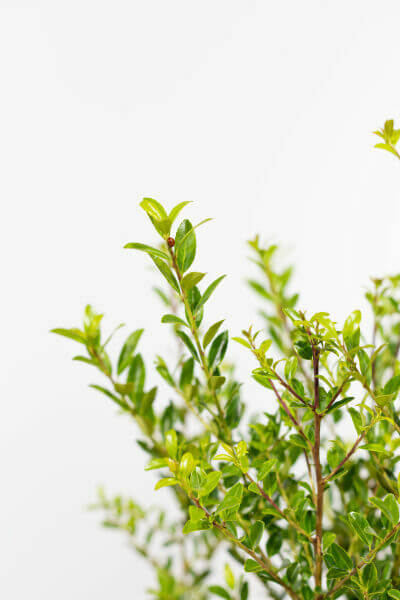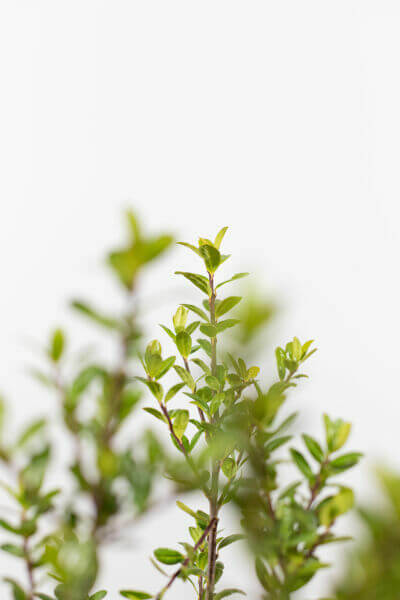Hedging Plants For Windbreaks
Hedging Plants For Windbreaks
Blog Article
Best Hedging Plants For Ground Cover
Improve your garden's allure with lavish hedge varieties such as Yew (Taxus), Thuja, Laurel, Photinia, and Bamboo, celebrated for their structural stability and ecological benefits.
Yew and Thuja supply evergreen protection and winter season durability, while Laurel provides fast growth and broad, aromatic leaves.
Photinia includes seasonal appeal with its vibrant red foliage, and Bamboo lends a low-maintenance, tranquil atmosphere.
These hedges enhance air quality, reduce sound, and develop tranquil, private spaces.
Correct planting, spacing, and upkeep ensure energetic development and ecological harmony.
Explore how these lavish ranges can elevate your garden's appeal and well-being.
Key Takeaways
Change Your Garden With Lush Hedge Ranges
- Select Yew for its dense, evergreen development and unequaled longevity.
- Opt for Laurel for its fast growth and broad leaves, making sure quick personal privacy.
- Select Photinia for its vibrant seasonal foliage, which turns a striking dark red.
- Make use of Bamboo for a low-maintenance, winter-hardy hedge with aesthetic appeal.
- Area plants 2-3 per meter and prune regularly for optimum growth and health.
Popular Hedge Plants
When transforming a garden with lavish hedge varieties, it's necessary to think about popular hedge plants such as Yew, Thuja, Laurel, and Photinia due to their unique qualities and benefits.
Yew (Taxus) is highly respected for its longevity and thick, green growth, making it a prime option for sustaining landscapes.
Thuja is noted for its evergreen foliage and robust winter season resilience.
Photinia includes seasonal vibrancy with red leaves that darken in time, developing dynamic visual appeal.
Laurel offers quick growth and aromatic, broad leaves, ideal for fast personal privacy.
Furthermore, Bamboo is an outstanding option for ambiance, providing a low-maintenance, winter-hardy alternative that boosts the garden's aesthetic with its sophisticated, swaying walking canes.
These selections accommodate a range of horticultural requirements and preferences.
Benefits of Garden Hedges
Garden hedges provide a plethora of benefits, making them a valuable addition to any landscape. These natural barriers are cost-efficient to execute and supply significant wind protection, improving air flow and adding to sound decrease. The thick foliage of hedges like Thuja and Beech guarantees personal privacy by obstructing visibility, creating a remote and tranquil environment.
Hedges likewise play a vital role in microclimate regulation, offering a steady environment that cultivates plant growth and minimizes temperature fluctuations. Their elaborate leaf structures filter contaminants, improving air quality and contributing to a healthier garden ecosystem.
Moreover, hedges excel in noise decrease, soaking up and deflecting acoustic waves to lower ambient sound levels. This double performance of offering both acoustic and visual privacy enhances the general serenity and visual appeal of any garden.
Planting and Maintenance Tips
For an effective hedge, precise preparation of the planting area is crucial. Ensure the soil has correct pH and drain to support strong root development.
Space the plants appropriately for the chosen types. Water the hedge often during its initial development phase, adjusting as required with seasonal modifications.
Execute a systematic bug control and illness prevention strategy, utilizing organic or chemical treatments when essential. Routinely inspect for aphids, termites, and fungal infections.
Apply mulch to keep wetness and reduce weeds. Seasonal pruning promotes dense development and air blood circulation, important for plant health.
Following these standards will help you cultivate a lively, properly maintained hedge that improves the appeal of your garden.
Spacing and Cutting Guidelines
Spacing and Cutting Standards
Proper spacing and cutting are crucial for cultivating healthy, aesthetically appealing hedges. Adequate spacing makes sure each plant receives enough nutrients, light, and airflow.
Follow these standards for optimal hedge upkeep:
- Spacing: Position hedge plants 2-3 plants per meter to motivate robust growth.
- Pruning Strategies: Regular pruning is vital for maintaining preferred hedge height and shape. Cut new development in summertime and cut down older wood during winter season.
- Seasonal Care: Change trimming schedules and techniques according to seasonal requirements to guarantee plant health.
- Hedge Height: Frequently monitor and trim to keep the desired hedge height and accomplish consistent aesthetic appeals.
Abiding by these actions will guarantee your hedge flourishes, boosting both the appeal and functionality of your garden.
Choosing the Right Hedge
Selecting the Right Hedge
Picking the appropriate hedge involves examining aspects such as mature height, foliage density, and environmental durability. Successful hedge plant choice needs comprehending each types' growth characteristics and site-specific versatility.
For instance, Yew (Taxus) provides exceptional durability and dense development, while Thuja is notable for its winter strength. In addition, thinking about upkeep requirements is vital; fast-growing types like Laurel or Privet need routine cutting, whereas low-maintenance alternatives like Bamboo or Ivy may be more effective for those looking for very little maintenance.
Ecological elements such as soil type, light accessibility, and moisture conditions ought to also guide the selection process. This careful technique makes sure the picked hedges will prosper, offering both functional and aesthetic benefits to the garden landscape.
Shipment and Planting Suggestions
To guarantee your hedge plants prosper, they ought to be delivered by specialized carriers and planted without delay upon arrival.
Follow these vital steps for successful planting:
- Soil Preparation: Improve the soil with natural matter to enhance drainage and nutrient content.
- Planting Depth: Develop a trench two times the width and equal to the depth of the root ball.
- Watering Techniques: Water completely after planting, keeping the soil consistently moist however not saturated.
- Mulching: Use a layer of mulch to maintain moisture and reduce weeds.
Client Support and Service
Offered the crucial function of prompt assistance in horticultural pursuits, our client support team is available 6 days a week through telephone, email, and social media to use professional advice and promptly deal with any issues. Their commitment to fast reaction times ensures consumer complete satisfaction by resolving inquiries related to plant health, optimum planting methods, and upkeep schedules.

Accessibility
6 days a week
This thorough support group, strengthened by an outstanding 9.3/ 10 customer rating, highlights our dedication to boosting the gardening experience for each client.
Frequently Asked Concerns
For How Long Does It Take for Hedge Plants to Establish?
Hedge plants usually need one to three years to end up being completely established, with the specific period varying by types and growing conditions.
Efficient care during this important period is essential for robust development. Consistent watering, alert weed control, and suitable fertilizer application are pivotal in promoting strong root advancement.
For example, fast-growing types like Laurel may develop quicker, while slower-growing varieties such as Yew might take longer. Thorough upkeep speeds up the establishment process, leading to healthy and thick hedges.
What Are the very best Hedge Plants for Personal Privacy?
The question of the very best hedge plants for privacy includes evaluating evergreen and deciduous choices.
Evergreen hedges like Thuja, Laurel, and Cypress provide year-round protection, ensuring continuous personal privacy.
On the other hand, deciduous hedges such as Beech offer seasonal privacy, shedding leaves in cooler months.
Key upkeep tips for privacy hedges consist of regular trimming, fertilizing in spring, and proper spacing-- normally 2 to 3 plants per meter.
Additionally, constant watering and thorough weed removal are important for promoting healthy, thick growth.
Can Hedge Plants Draw In Wildlife to My Garden?
Yes, hedge plants can bring in wildlife to your garden by providing important advantages like shelter, food, and nesting websites, thus improving regional biodiversity. For example, yew, holly, and laurel are exceptional for attracting birds, while ivy supports a variety of bugs.
However, it's essential to keep in mind that there are some downsides, such as increased maintenance to manage pests and regular upkeep. Thoroughly choosing and keeping hedge ranges can assist stabilize these disadvantages and advantages, eventually cultivating a sustainable and vibrant ecosystem in your garden.
Are There Any Blooming Hedge Plants Available?
Yes, there are flowering hedge plants readily available that can boost the appeal of your garden.
For instance, Elaeagnus, likewise called Olive Willow, produces aromatic white flowers in the fall, including a touch of sophistication.
Photinia, another popular option, showcases lively red leaves that grow into an abundant green, producing a dynamic visual impact throughout the seasons.
To ensure these plants thrive, it's important to practice proper pruning strategies and seasonal upkeep, such as cutting new growth in the summer and cutting back in the winter.
These measures will help keep the health and visual appeal of your flowering hedges.
How Do I Prevent Insects in My Hedge Plants?
To prevent bugs in hedge plants, use natural insect control methods and maintain correct hedge care. Introduce advantageous pests like ladybugs, which victimize hazardous pests, to develop a balanced ecosystem.
Frequently examine your hedges for indications of invasion and quickly remove any afflicted parts to prevent the spread. Ensure the health of your hedges by applying well balanced fertilizers and offering adequate water.
Use mulching to retain soil wetness and proper spacing to lower plant stress and promote robust development. These practices collectively assist in lessening pest problems and maintaining a healthy hedge.
Conclusion
In essence, picking the best hedge ranges such as Yew, Thuja, and Laurel can transform any garden into a serene haven. These plants Browse this site offer year-round greenery, improve visual appeal, and offer useful benefits like noise decrease and wind protection.
Appropriate planting techniques, accurate spacing, constant watering, and seasonal trimming are important for optimum development.
Trustworthy delivery services and professional consumer support guarantee a smooth experience from purchase to planting, making it easier than ever to elevate your outdoor area.
Garden hedges provide a wide variety of advantages, making them a valuable addition to any landscape. These natural barriers are affordable to carry out and offer significant wind defense, boosting air flow and contributing to noise decrease. The dense foliage of hedges like Thuja and Beech guarantees privacy by obstructing presence, creating a serene and remote environment.

Pruning Strategies: Regular pruning is essential for keeping wanted hedge height and shape. Cut brand-new growth in summer and cut back older wood during winter season.
Report this page